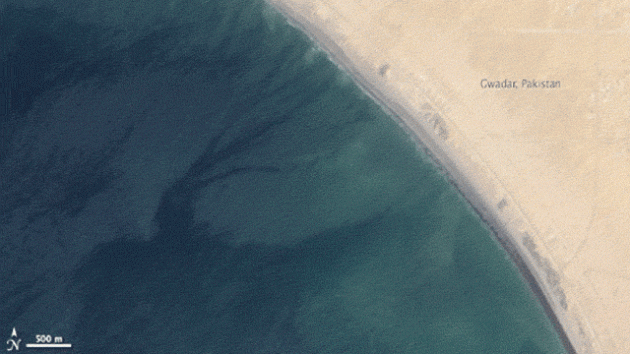This Island Appeared Out Of No Where Off The Coast Of Pakistan
2013.09.28

NASA's Earth Observing-1 (EO-1) satellite was able to capture the birth of a new island off the coast of Gwadar, Pakistan. This happened after this week's 7.8 earthquake. But will this island last? Or will it disappear?
As of today, the earthquake has claimed 515 lives, with attacks from insurgents hampering relief efforts. The death toll is expected to rise, and while the country recovers, the rest of the world has become fascinated by the side effect of the disaster.
The quake was so powerful, it created a new island in the Arabian Sea. Some people have even explored it since.
The island is more of a "mud volcano" than it is an island. But you can take a day cruise out to visit it, says local journalist Bahram Baloch.
"There were dead fish on the surface. And on one side we could hear the hissing sound of the escaping gas," he told BBC News.
This is not the first time an island came out of nowhere. After an earthquake in the 1940s, the British Indian Geological Survey recorded a new island off the coast of Karachi.
The "island" was mostly sediment, so it began to erode in the ocean waves and "within days, weeks, it washed away." The same thing happened again in 1968.
More Articles
Copyright © Fooyoh.com All rights reserved.